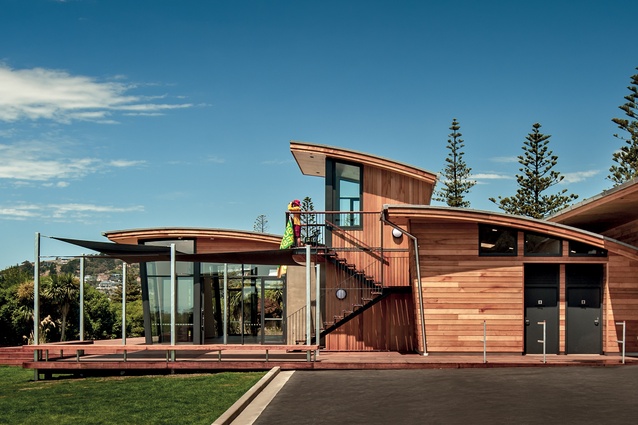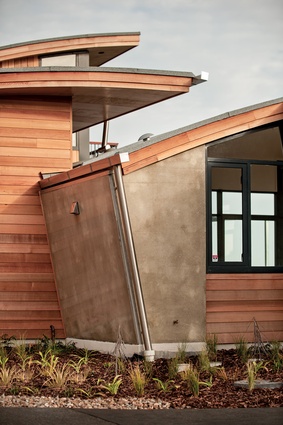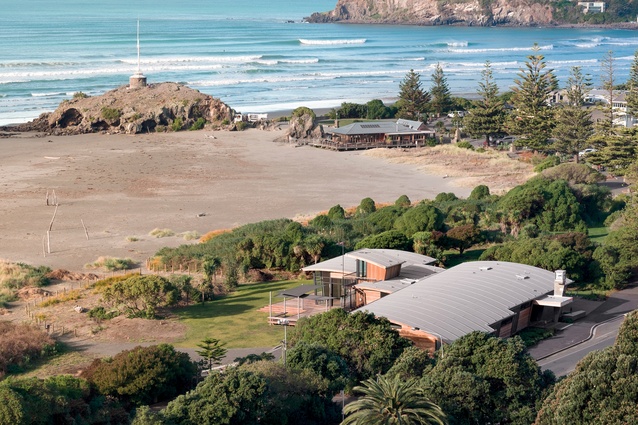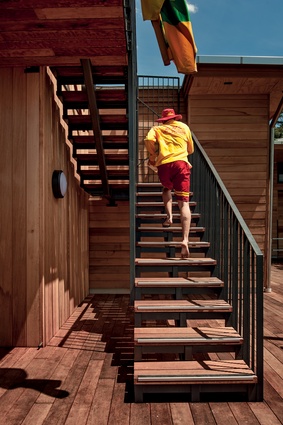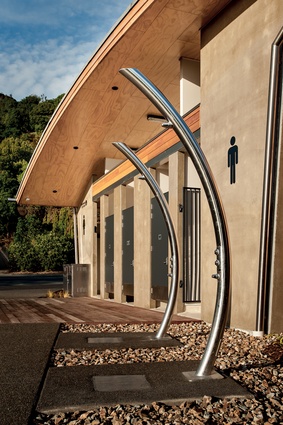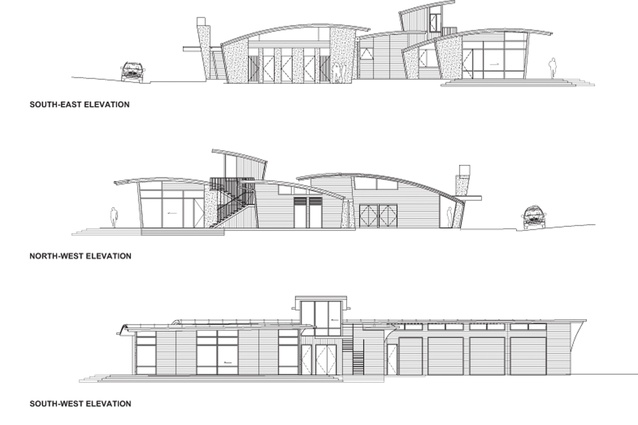Coastal gem: Sumner Surf Lifesaving Club
A new surf club in Christchurch, designed by Wilson & Hill Architects, sits both confidently and modestly on the golden sands of Sumner Beach.
Infamously, the coastal suburb of Redcliffs was dramatically affected during the 22 February 2011 earthquake; one bystander described the high cliffs “running down like water…” Today, this stretch of coastline, located about 10km south-east of central Christchurch, is barely recognisable.
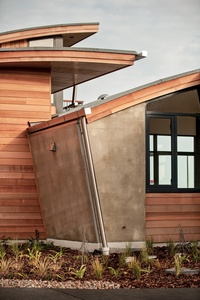
Currently, they’re being excavated by ‘robotic’ diggers, remotely controlled to protect the operators against further collapses. While the cliffside has long been dotted with houses, more than 65 were red-zoned as a result of the quakes and have been demolished, or soon will be.
A little further along this coastal route, at the middle of Sumner’s golden-sand beach, a new building dedicated to the local surf lifesaving club now replaces a 1950s’ structure that was also ‘munted’ (to use the local terminology) during the quakes.
To the west of the new clubhouse, the beach is bound by the Avon and Heathcote river mouth and to the east is the headland of Cave Rock, an unusual volcanic formation also known as Tuawera, which separates Sumner from Scarborough Beach.
Architect David Hill, from Wilson & Hill Architects, is very familiar with this stretch of coastline, being a long-serving member of the neighbouring Taylors Mistake Surf Lifesaving Club at Scarborough. He knows many of Sumner’s members and, when the time came, he was invited to design their new clubrooms.
The members wanted “a piece of architecture, not a shed”; so Hill’s approach was to break the form up with three curved roofs (over about 300m2) reminiscent of the rolling surf, which clearly struck a chord with the client. Other design elements relate to this ‘wave’ form also: the expressed ‘ribs’ on the membrane roof, the sloping walls at the back of each form and the angled soffits.
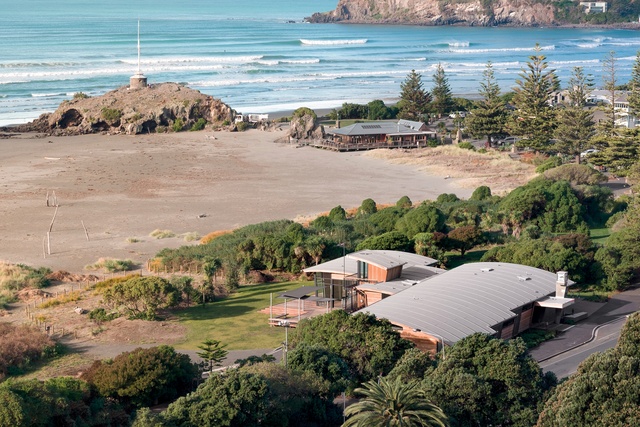
This is a functional and elegant design solution, especially given the $2.8-million build cost (which included everything apart from loose furniture). Sadly, the post-quake insurance payout supplied only 15 per cent of the rebuild cost, and about $575,000 was provided by Council for public facilities – new toilets, showers and changing rooms, restoration of a clock, and a pump station – but the rest of the budget had to be raised through the fundraising efforts of the local community.
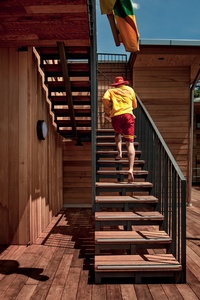
Fortunately, the club has retained its membership numbers, in spite of the quake, by continuing to operate from shipping containers placed on the foreshore. Also, the site, which is owned by Central Government, had previously been leased to the Club, making it was easier to obtain resource consent for the building without public notification.
The obvious starting point for the design was the patrol tower, which needed a masterful outlook over Sumner’s 400m-long stretch of beach. The main entrance and front of the building is situated on the other side of the structure, facing the street and the cliffs. This roadside entrance also features a clock recovered from the previous clubhouse, a long-time local landmark that needed to be restored and plopped on top of a plinth. A canopy juts out over the entrance path and leads into a foyer furnished with historical surf lifesaving photographs and paraphernalia.
This site is important for Sumner as it’s the first building you see as you arrive into the township. A coastal path, which is yet to be built on the beachside of the site, will help to connect the building into the community, further enhanced by new landscaping to be provided by Council.
While the building seemingly appears level with and quite close to the beach, the engineers avoided potential damage caused by erosion by siting it on a large sandbag foundation system, called Elcorock containers, and a 2m-deep gravel raft. This minimises future earthquake damage while also addressing sea-level rise.
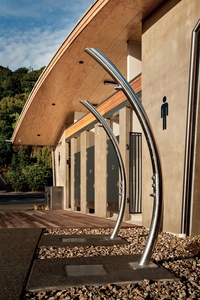
Being a coastal public building, it needed a robust exterior, so the architects chose untreated cedar, concrete and marine-grade stainless steel to keep maintenance requirements low, ensuring the 250 members who volunteer at the club are not spending excessive time on upkeep but, rather, on the vital job of saving lives on the water.
The interior spaces are simple and modest. The main function space accommodates about 100 members at any one time and is used for around seven of the warmer months of the year. It’s also hired out for community activities, weddings and funerals. This rectangular space opens up on three sides, via high doors, to decked terraces, ensuring there is always a sheltered spot from the prevailing wind. A kitchen pops out of the back of the space and features a huge movable bench for flexibility.
Off a central hallway, two staff changing rooms are nice and bright due to their high ceilings and skylights; these can be accessed from both the inside and outside, catering for lifesavers coming off the beach. The end of the hallway leads to the foyer and, also, directly into a row of sheds containing racks of surf equipment. Adjacent, large sails offer sunshading over the deck so lifesavers can gear up and prepare for training on the beach.
This building was built mainly due to the fundraising and hard work of the community. The design is contextual, practical and modest, and it looks fantastic too. I really hope this clubhouse will still sit here, looking sweet, in 100 years’ time, still serving the swimmers and surfers of Sumner.

